5 Essential SAT Reading Strategies for Evidence Command
Author
Hartwell
Date Published

The new SAT requires students to grasp the reasoning behind each answer they select. Command of Evidence questions exemplify this objective. To effectively answer these questions, you must thoroughly assess your thought process and the evidence offered by the passage's author.
This article will concentrate on the evidence questions within the Reading section of the SAT. In this guide, I will clearly explain what these questions assess, the different types of questions you may encounter, and strategies to ensure you can answer them correctly every time!
What Are Command of Evidence Questions?
Command of Evidence questions were introduced as a new component of the SAT Reading and Writing sections in 2016. Each test includes 18 Command of Evidence questions across both sections, and you will receive a subscore out of 15 based on your correct answers. The College Board has provided a conversion chart from raw to scaled scores:
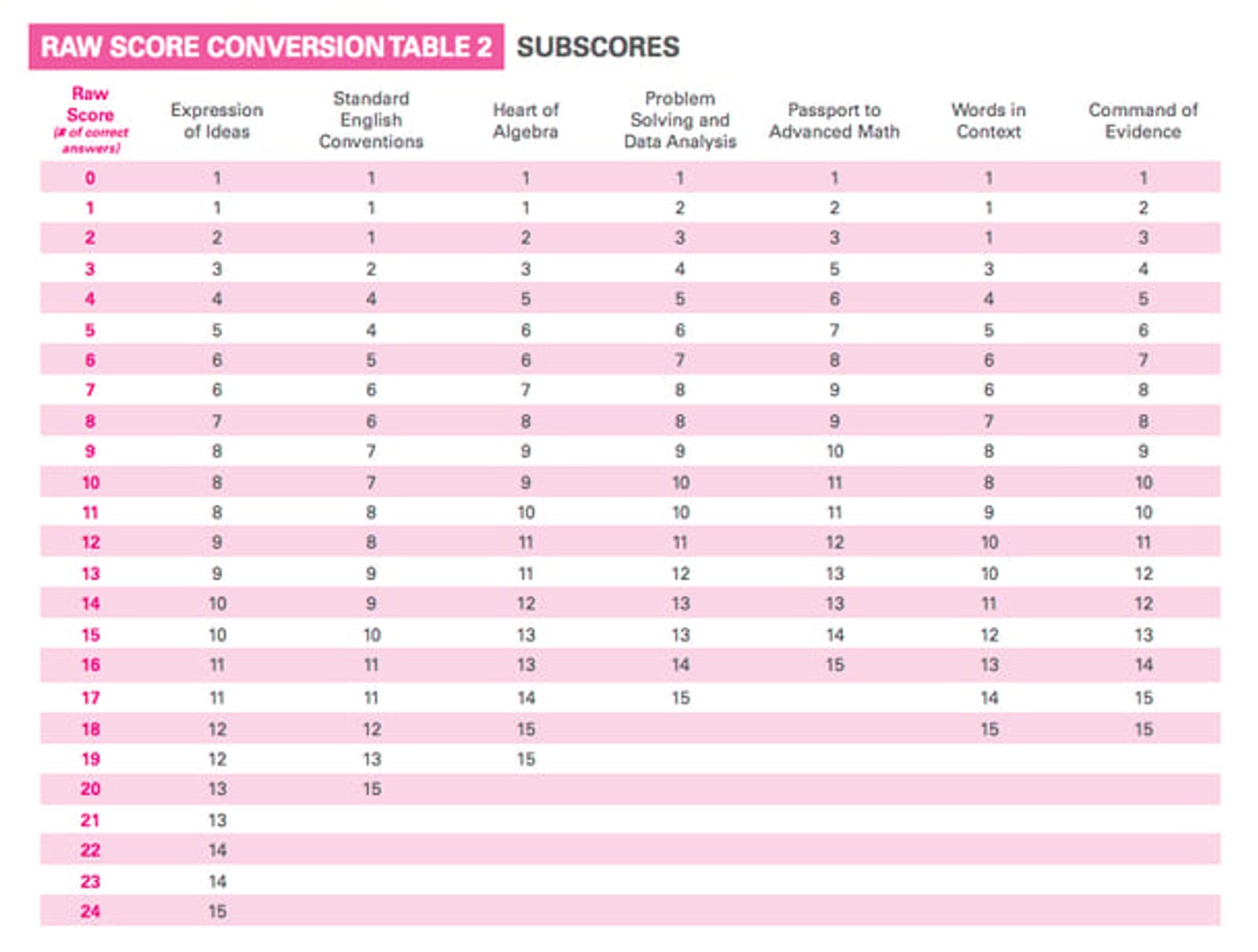
As shown, Command of Evidence is one of seven subscores designed to provide students with a clearer understanding of their academic strengths and weaknesses, moving beyond mere section or cross-test scores.
What Do Command of Evidence Questions Assess?
This article will specifically address Command of Evidence questions in the Reading section (for those related to SAT Writing, refer to our tips focused on Writing Command of Evidence questions). These questions require you to:
- Identify the strongest textual evidence for your response to the preceding question.
- Understand how authors utilize evidence to bolster their claims.
- Analyze how data reinforces the assertions made in the passage.
When tasked with finding the best textual evidence for a previous answer, each option will present a different quote from the passage. This process compels you to confront the reasoning behind your chosen answers directly. Additionally, these questions are distinctive as the answers to two consecutive questions are interconnected. Reviewing the evidence choices can assist in accurately answering the first question, or selecting the correct answer for the first question can guide you to the relevant evidentiary quote.
In questions that ask you to determine how the author supports their claims, a similar thought process is required, even though these questions are independent. Again, the choices consist of quotes from the passage, but this time you need to identify the quote that most effectively supports the author’s argument rather than your own preceding answer. Although less common, these types of evidence questions still appear once or twice on each test.
The Command of Evidence category also includes new data interpretation questions found in the Reading section. You will be asked which claim is most strongly backed by the information presented in a graph or chart, or whether the data supports the authors’ assertions at all.
Overall, these questions evaluate your analytical thinking regarding how certain conclusions are substantiated. They reflect a broader shift in the SAT towards assessing practical skills. Developing this way of thinking is essential before entering college and the workforce, as it will enable you to conduct effective research, craft persuasive arguments, and engage with texts critically. In the following section, I will provide examples of all three types of Command of Evidence questions, giving you a clearer understanding of what to anticipate!
Examples of Command of Evidence Questions
The SAT Reading section includes three types of Command of Evidence questions. Below, we will explore what each type assesses and review a sample question.
Question Type 1: Paired Find the Evidence
Here’s an illustration of the first type of Command of Evidence question. This question prompts you to identify the best evidence supporting your answer to the previous question.
To set the context, I will first provide the relevant paragraph from the passage. Prior to this paragraph, the author discusses the shortcomings of North American public transportation systems, which have influenced individuals to opt for cars instead:
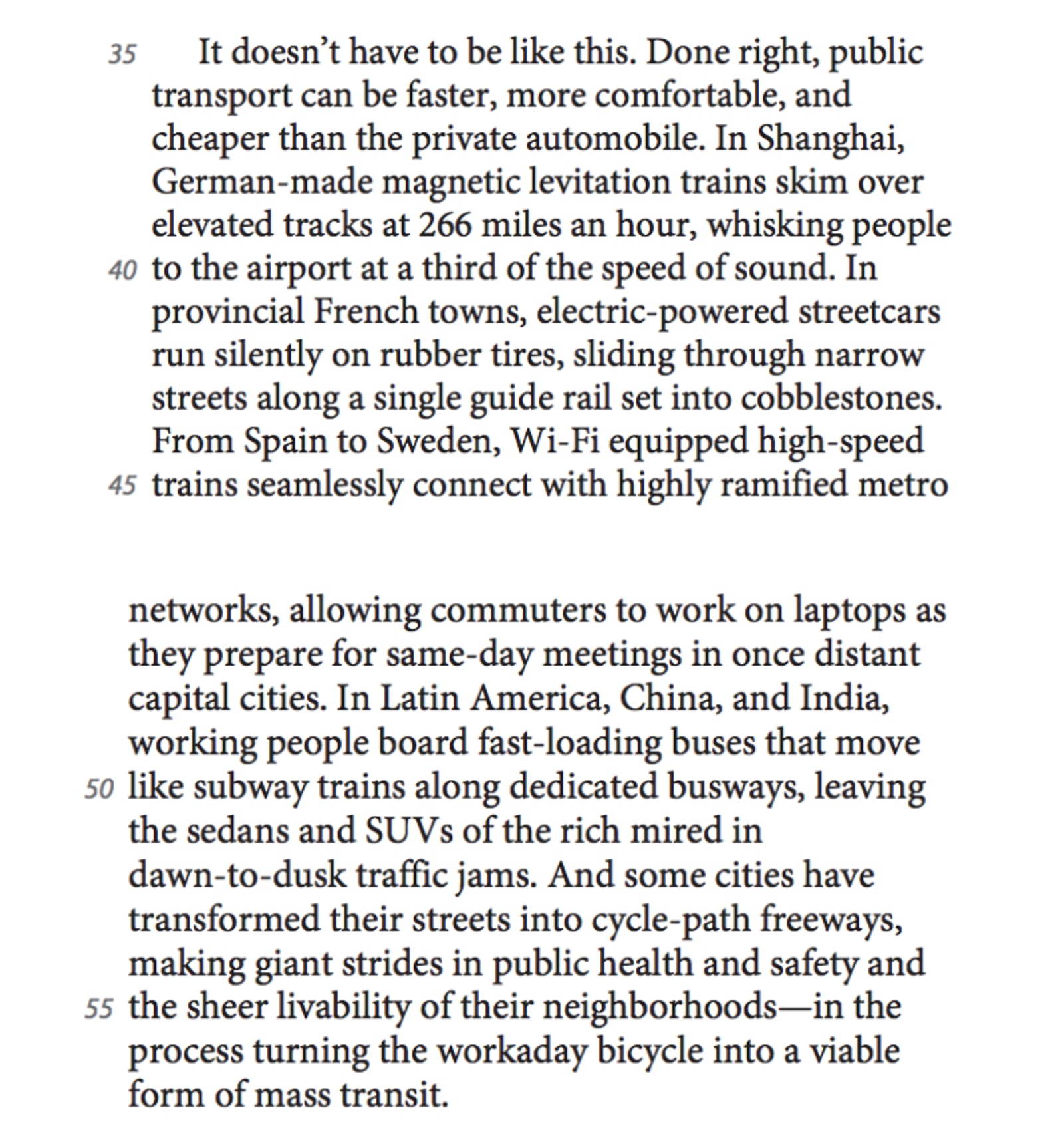
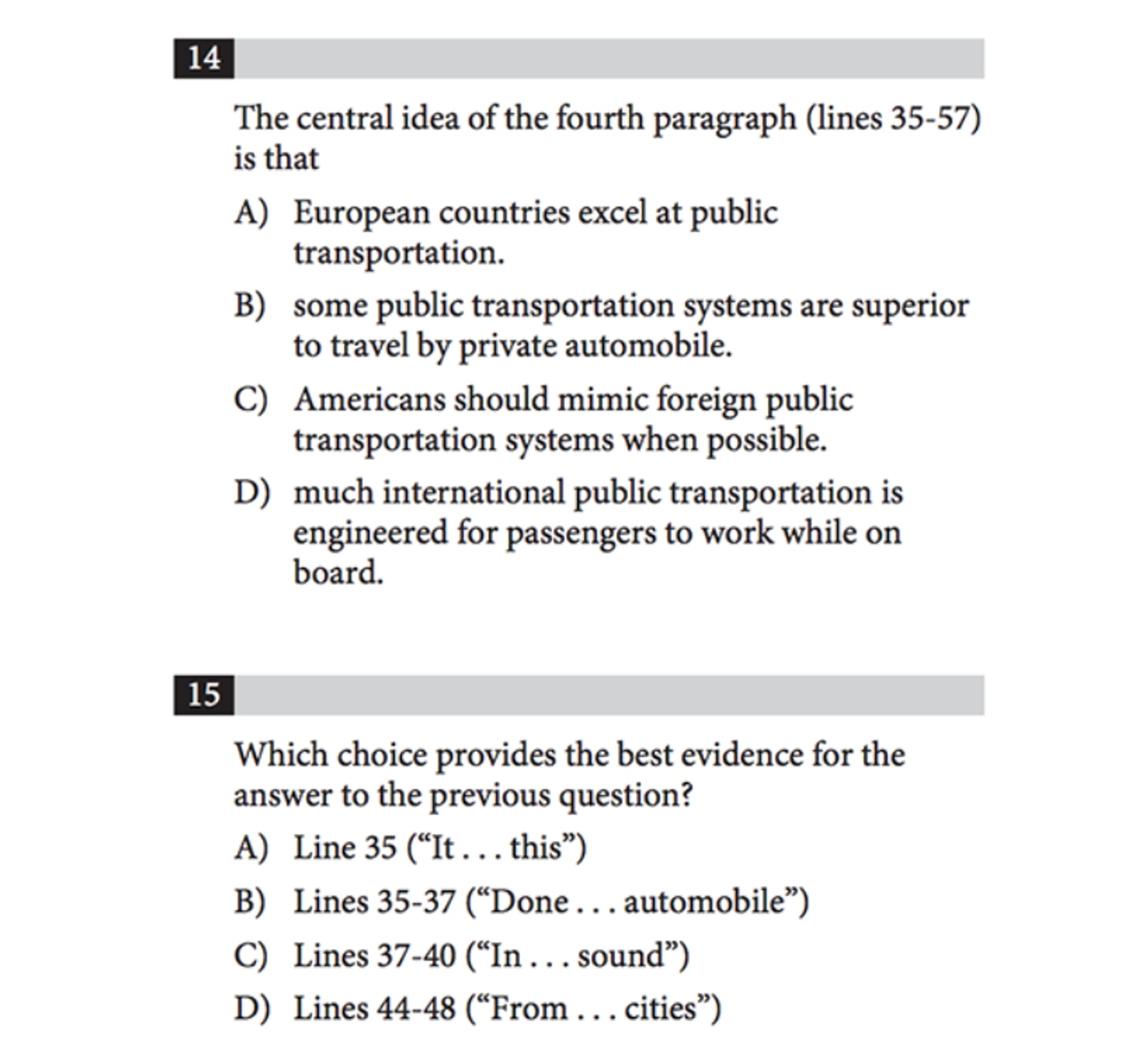
What’s intriguing about these questions is that you cannot respond to the “find the evidence” question until you comprehend what the previous question is asking. As you read this paragraph, consider how you would summarize its main focus without consulting the answer choices. The central idea of the paragraph is that public transportation can be just as convenient and comfortable as using one’s own car, as demonstrated by sophisticated public transit systems worldwide.
Let’s take a look at the answer choices:
Choices A and D are too narrow in focus, failing to capture the main point conveyed by the paragraph. Choice C is irrelevant because the paragraph does not explicitly advocate for changing American public transportation systems to match those models. Choice B appears to be the most suitable response for question 14.
However, we still need to examine question 14 closely! Question 15 urges us to reassess why we selected B. Why do we believe that the main point of the paragraph aligns with the statement “some public transportation systems are superior to travel by private automobile”? On the previous SAT format, you might have thought, “I don’t know, that just seems like what the main point was. I don’t need to justify my choice,” but that approach won’t work this time.
Now, let’s analyze the answer choices for question 15:
Choices C and D refer to lines that elaborate on the main point but do not establish it directly. Choice A is somewhat complicated to dismiss because it relates to the notion that public transportation can be convenient. However, that sentence does not provide concrete information to support the main point when viewed in isolation. The most compelling evidence is located in the second sentence. It serves as a clearly defined topic sentence that lays the groundwork for the remainder of the paragraph. Therefore, once again, choice B stands out as the correct answer!
Question Type 2: Find the Author’s Evidence
Unlike the paired questions, these evidence questions focus on identifying which piece of textual evidence most effectively supports a point made by the author. This type relates to another excerpt from the same passage we examined in the previous two questions:
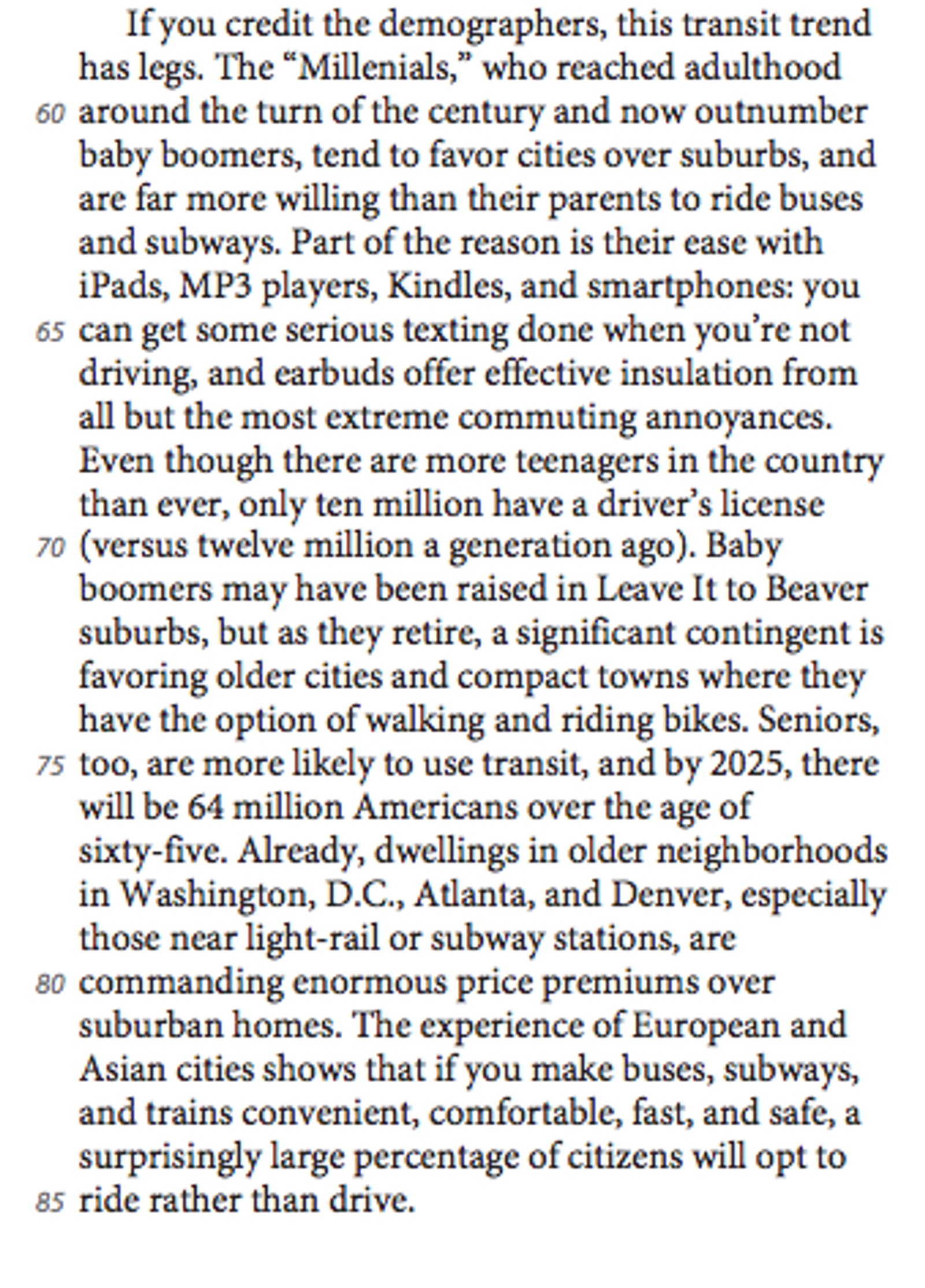

In this case, we are searching for the line that most directly supports the idea that the use of electronic devices is compatible with public transportation. This question is relatively straightforward to answer if you read carefully and avoid rushing through the test. The only choice that mentions electronic devices alongside public transportation is choice B, which corresponds to lines 63-67. All other choices are largely irrelevant to the concept presented in the question.
Question Type 3: Data-Driven Evidence
You will also be tasked with drawing conclusions based on information presented in charts or graphs. Here is one of the charts that accompanied the public transportation article we've been analyzing, along with a related data-driven evidence question:
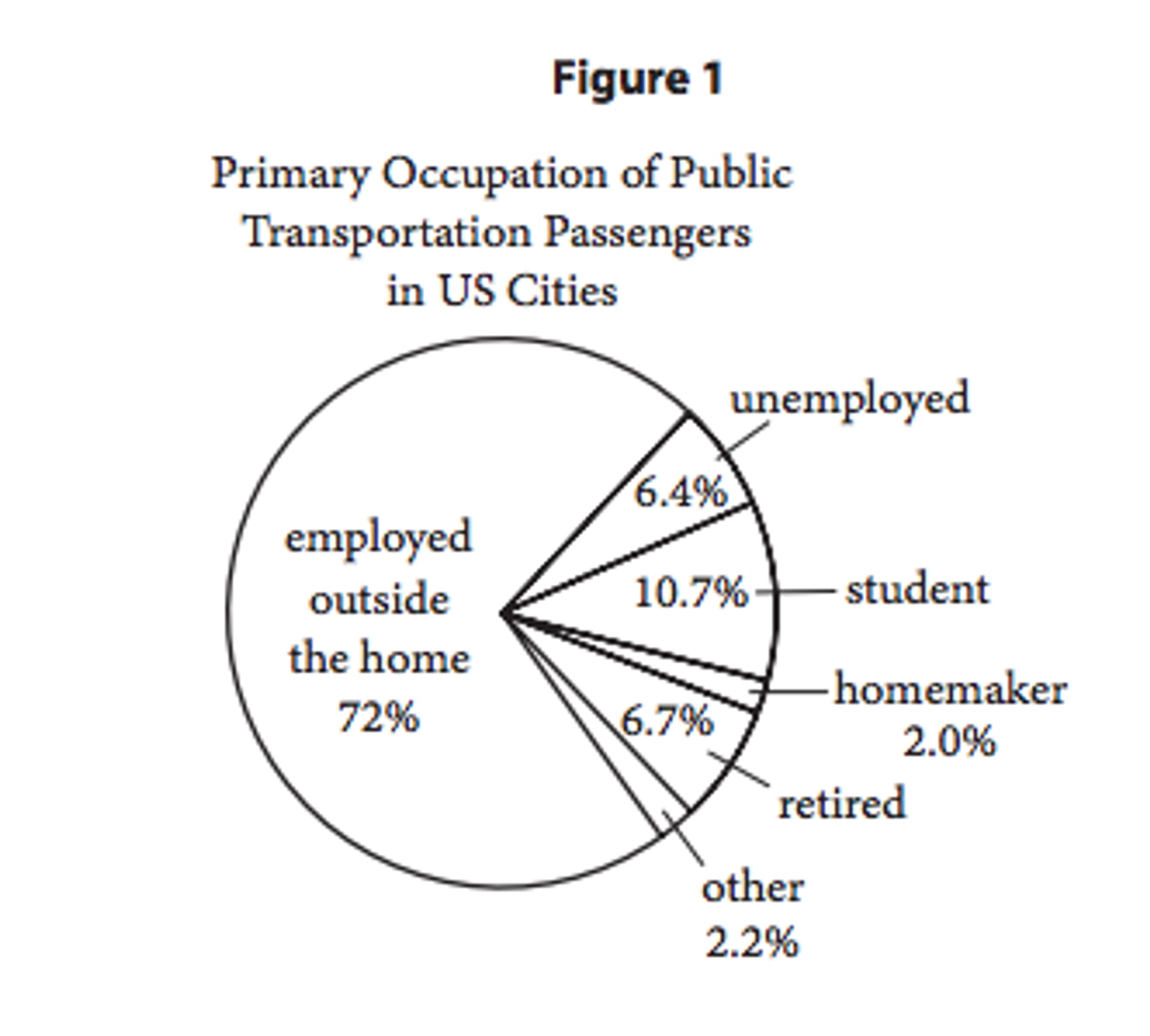
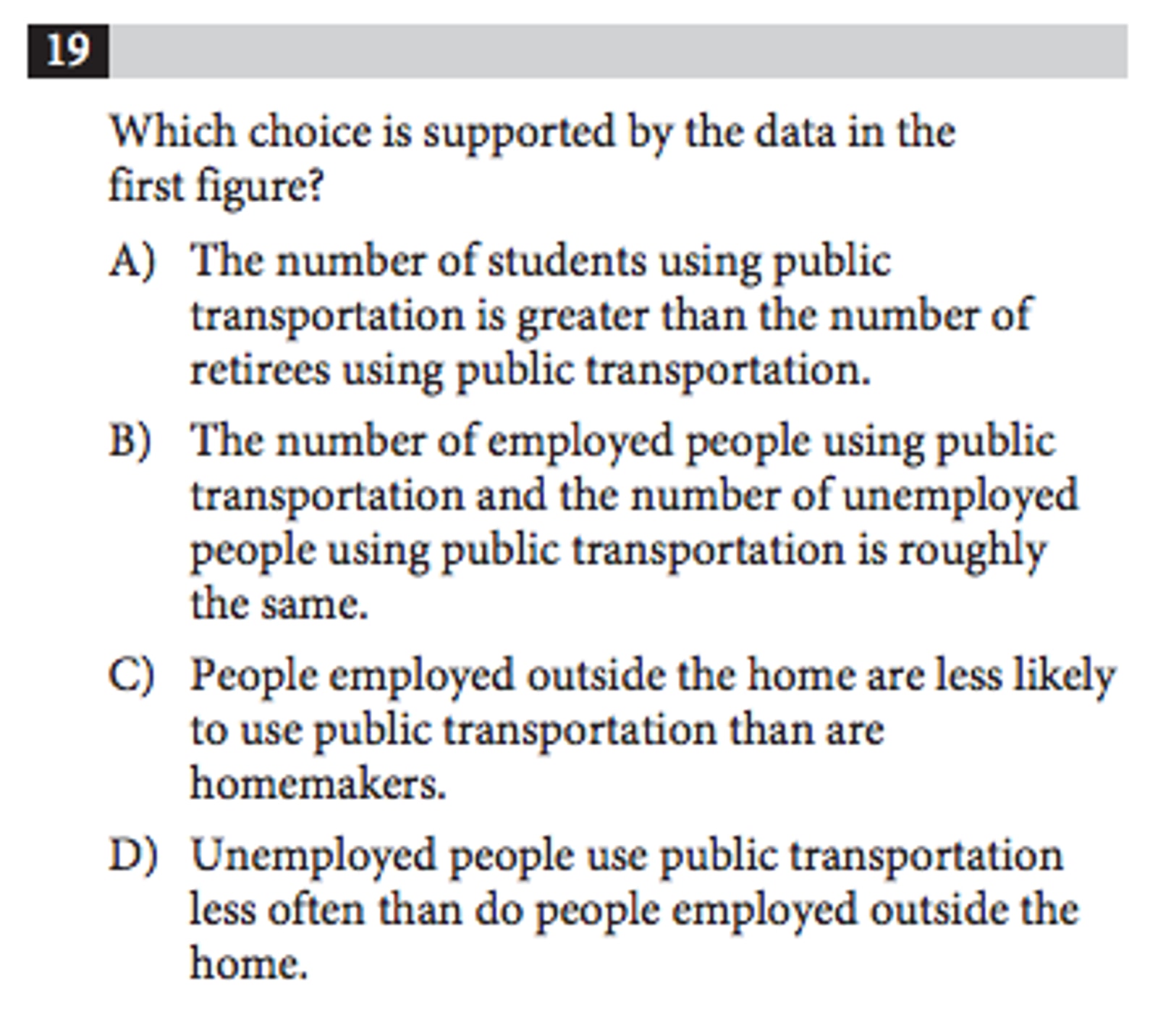
This question is also quite clear-cut, but it does pose a slight challenge. Choices B and C can be eliminated as they are clearly incorrect. The chart shows a significantly higher number of employed individuals compared to the unemployed, and those employed outside the home constitute a much larger percentage of public transportation users than homemakers.
The real challenge lies in choosing between A and D. Choice D is incorrect due to the phrase "less often." The data does not indicate how frequently different types of individuals use public transportation; it only reflects the numerical representation of those who utilize it. Choice A, however, emerges as the correct answer because it is the only option that is verifiably accurate based on the chart. According to the data, 10.7% of public transportation users are students, while only 6.7% are retirees!
5 Tips for Answering SAT Reading Evidence Questions
Now that we’ve explored the various types of Command of Evidence questions, here are some tips to help you answer them in the most efficient and accurate manner.
1: Make Predictions
For both Paired Find the Evidence and Author Evidence questions, try to make a prediction about the answer before reviewing all the quotes provided in the answer choices. It’s beneficial to formulate an idea about what the answer should look like beforehand, as this reduces the chances of your thought process being influenced by the options presented. For instance, in the first sample question, consider which part of the paragraph led you to conclude that the main idea was “some public transportation systems are superior to travel by private automobile.” You might be able to predict that the second sentence of the paragraph offers the strongest evidence for this claim without needing to see the answer choices.
2: Mark the Passage
Differentiating between quotes considered as evidence and the rest of the passage can be challenging, particularly if they appear within longer paragraphs. To simplify the process, underline each potential piece of evidence presented in the answer choices. This strategy helps you maintain focus and identify clearer connections between the evidence and your previous answer or the author’s argument in the passage.
3: Look for Synonyms
A crucial aspect of evidence questions is establishing a direct link between the support and the claim. Search for answer choices that contain synonyms for terms or concepts mentioned in the question or in your previous answer. Typically, this indicates a strong evidentiary connection. For example, in the second question we discussed, the phrase “personal electronic devices” found in the question is echoed by terms like “iPads, MP3 players, Kindles, and smartphones” in choice B. This answer represents the best evidence due to its direct connection to the claim in the question.
4: Read ALL the Answers
Though it may require a bit more time, it’s essential to read every answer choice before making a final decision on these questions. You’re aiming to identify the best evidence or the most accurate conclusion. Avoid the mistake of selecting an answer that’s only partially correct because you rushed your decision! Take a systematic approach to ensure you’re not taking unnecessary risks.
5: Digest the Data
If the passage includes charts or graphs, take a moment to examine them and understand what they represent before answering the questions. Quick judgments can sometimes lead to mistakes, especially if you’re less familiar with data interpretation. Developing a clear understanding of what each figure illustrates will help you draw accurate conclusions later on.
Conclusion
Command of Evidence questions were introduced to the SAT this year. There are three distinct types of these questions in the Reading section:
- Paired Find the Evidence: Select a quote from the passage that directly supports your answer to a prior question.
- Find the Author’s Evidence: Choose a quote from the passage that directly supports a conclusion drawn by the author.
- Data-Driven Evidence: Analyze evidence presented in charts and graphs to draw appropriate conclusions.
These questions require you to examine your thought process more explicitly, aiding in understanding why you responded in a particular way and validating your conclusions (or those of the author). They compel you to delve deep into reading comprehension. Some effective strategies for tackling these questions include:
- Making predictions about the answer before reviewing the choices.
- Underlining potential evidence within the passage.
- Identifying synonyms that connect the claim to supporting evidence.
- Reading all available answer choices before settling on a final decision.
- Gaining a solid understanding of figures before tackling data-driven questions.
While these questions are new, they are not necessarily more challenging than previous content you’ve encountered on the SAT. They eliminate the misleading notion of subjectivity in SAT Reading questions by demonstrating that there is concrete evidence supporting every answer. By practicing the identification of direct evidence and steering clear of assumptions, you can enhance your skills and become a more proficient SAT test-taker overall!
Related Posts
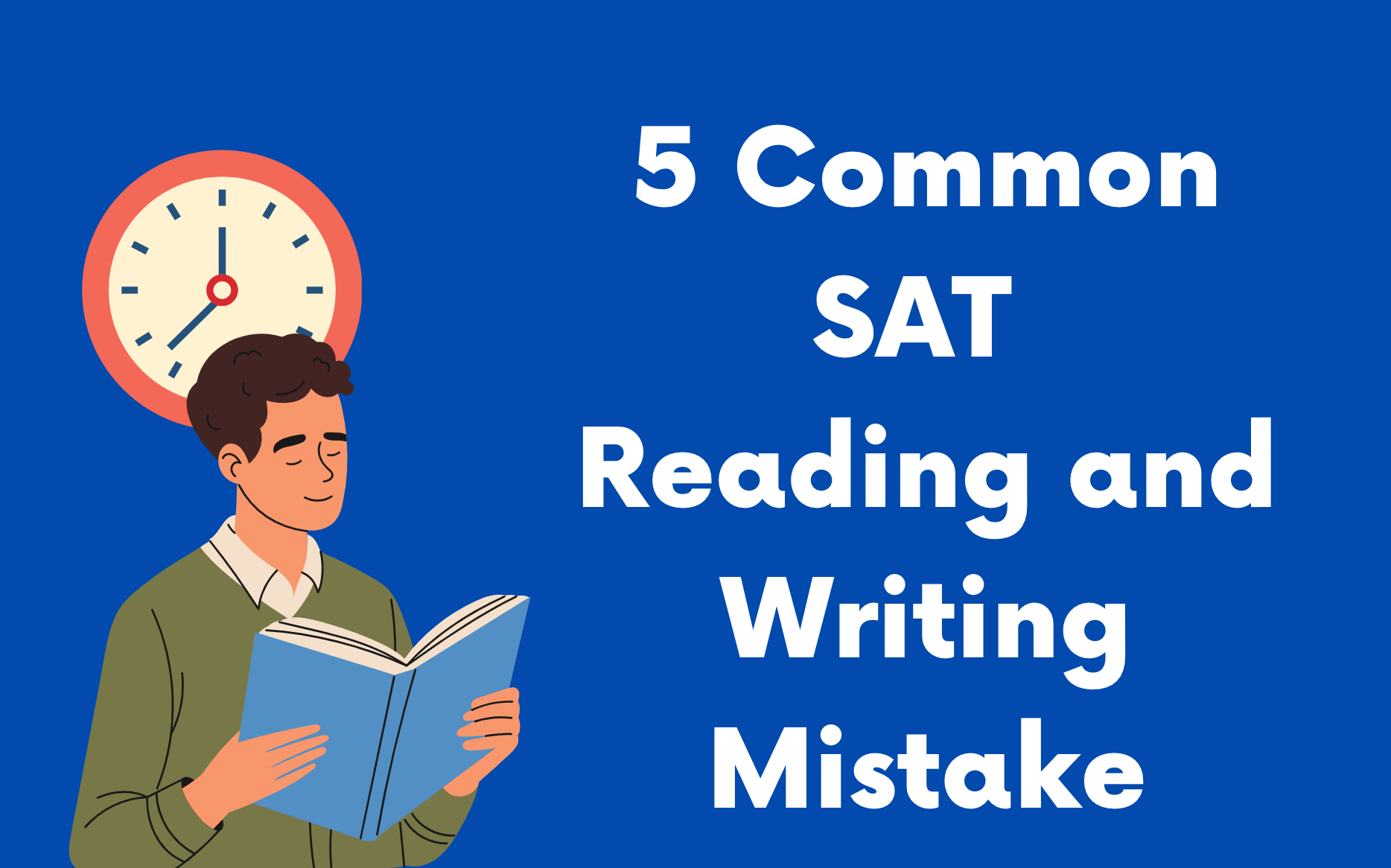
Struggling with the Digital SAT Reading & Writing section? Discover 5 common mistakes students make and actionable tips to boost your score!
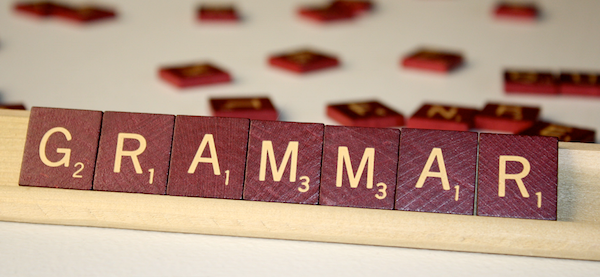
Master the Digital SAT with our comprehensive guide to grammar rules, ensuring you ace the verbal section with confidence.